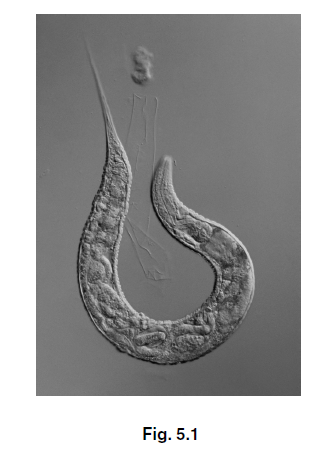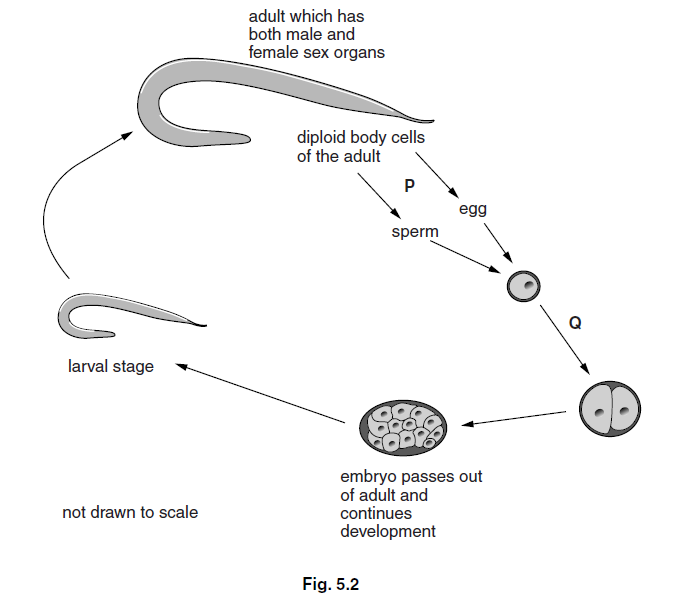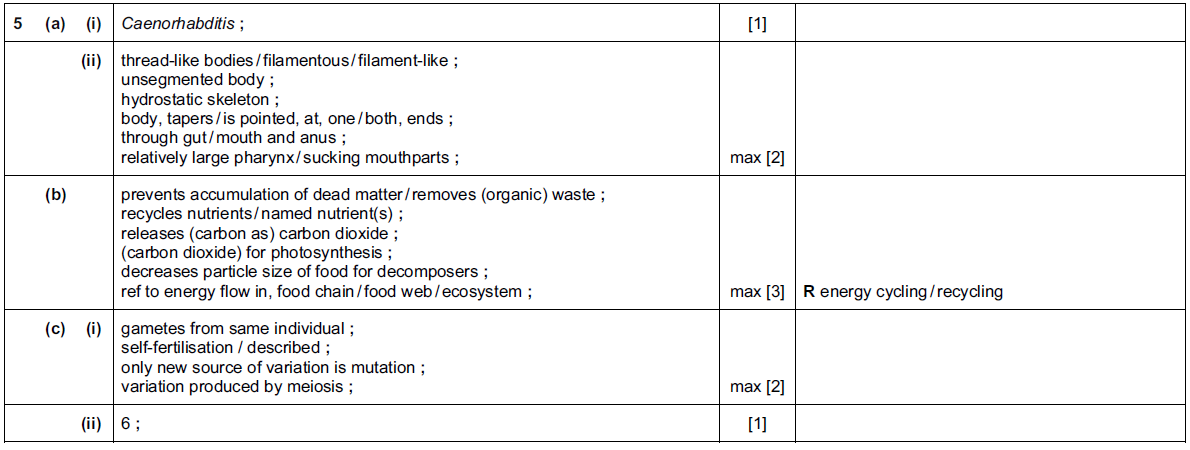Question
Figure shows the nematode, Caenorhabditis elegans.

(a) (i) State the genus of this nematode.
………………………………………………………………………………………………………………………[1]
(ii) State two structural features of nematodes.
1 ……………………………………………………………………………………………………………………….
2 ……………………………………………………………………………………………………………………….
[2]
(b) Nematodes feed on dead and decaying material. Explain why this gives nematodes an
important role in ecosystems.
…………………………………………………………………………………………………………………………………
…………………………………………………………………………………………………………………………………
…………………………………………………………………………………………………………………………………
…………………………………………………………………………………………………………………………………
…………………………………………………………………………………………………………………………………
…………………………………………………………………………………………………………………………………
……………………………………………………………………………………………………………………………..[3]
(c) Fig. 5.2 shows the life cycle of C. elegans. The diploid number of this species is 12.

(i) Suggest why there is very little genetic variation in the offspring of the adult nematode
shown in Fig. 5.2.
………………………………………………………………………………………………………………………….
………………………………………………………………………………………………………………………….
………………………………………………………………………………………………………………………….
………………………………………………………………………………………………………………………….
………………………………………………………………………………………………………………………[2]
(ii) State the haploid number of C. elegans.
………………………………………………………………………………………………………………………[1]
(iii) Explain why meiosis occurs at P and mitosis occurs at Q.
meiosis at P …………………………………………………………………………………………………………
………………………………………………………………………………………………………………………….
………………………………………………………………………………………………………………………….
………………………………………………………………………………………………………………………….
mitosis at Q …………………………………………………………………………………………………………
………………………………………………………………………………………………………………………….
………………………………………………………………………………………………………………………….
………………………………………………………………………………………………………………………[3]
(d) C. elegans was one of the first organisms to have its genome sequenced.
An organism’s genome is the sum of all its genetic material. Gene sequencing identifies all
the component parts of the DNA that makes up the genome.
State where DNA is located in a cell.
…………………………………………………………………………………………………………………………………
……………………………………………………………………………………………………………………………..[2]
Answer/Explanation
Ans:


